Piacentine Pattern
Piacentine Pattern, several double-ended versions.
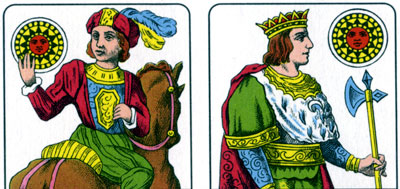
The Italian ‘Piacentine’ pattern has Italo-Spanish suit symbols and slightly narrow, elongated cards. It was made in single-ended format until around the mid-20th century after which time double-ended versions are more usual. When this happens some features of the old cards are lost. The Ace of Coins used to bear the tax stamp, and shows a single-headed, crowned eagle (as opposed to the Neapolitan double-headed eagle). Cards of Spanish design occur in those parts of Italy formerly under Spanish influence (Neapolitan, Piacentine, Romagnole, Sardinian and Sicilian patterns) although the ‘pintas’ or line-breaks in the outer frames have been lost. Early examples of the Piacentine pattern also have features related to French Aluette cards.
Modiano, Trieste

Above: double-ended example of Piacentine pattern made by Modiano, Trieste. The King of Coins holds an axe and the Cavalier of Coins rides a horse with its back facing the viewer, features which were seen in some archaic, late-medieval Spanish-suited patterns see example →. Images kindly supplied by Anthony Lee.
Armanino (Piatnik) c.1977
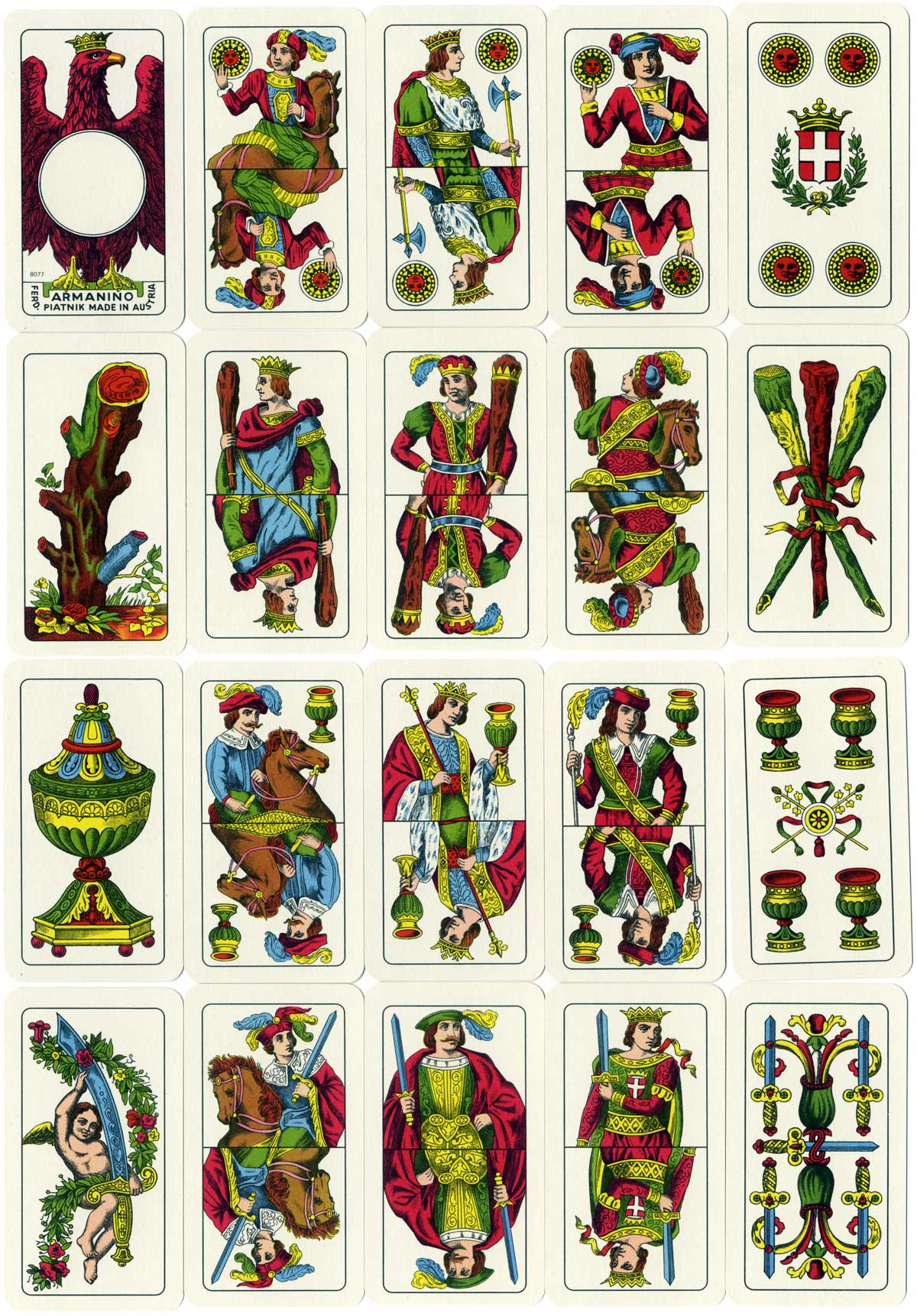
Above: double-ended Piacentine pattern made by Armanino (Piatnik) c.1977
Standard designs printed by Piatnik for Tobako, Milan, Italy, 1980.
Looking at the tuck box for this pack one has no idea who made the cards inside. However, the 4 of Coins leaves us in no doubt – Piatnik of Austria. Their characteristic date mark helpfully appears at the base of the Ace of Coins. This version of the Piacentine pattern by Piatnik is quite different from the one they made for Armanino (above). The courts are double-ended. See the box►
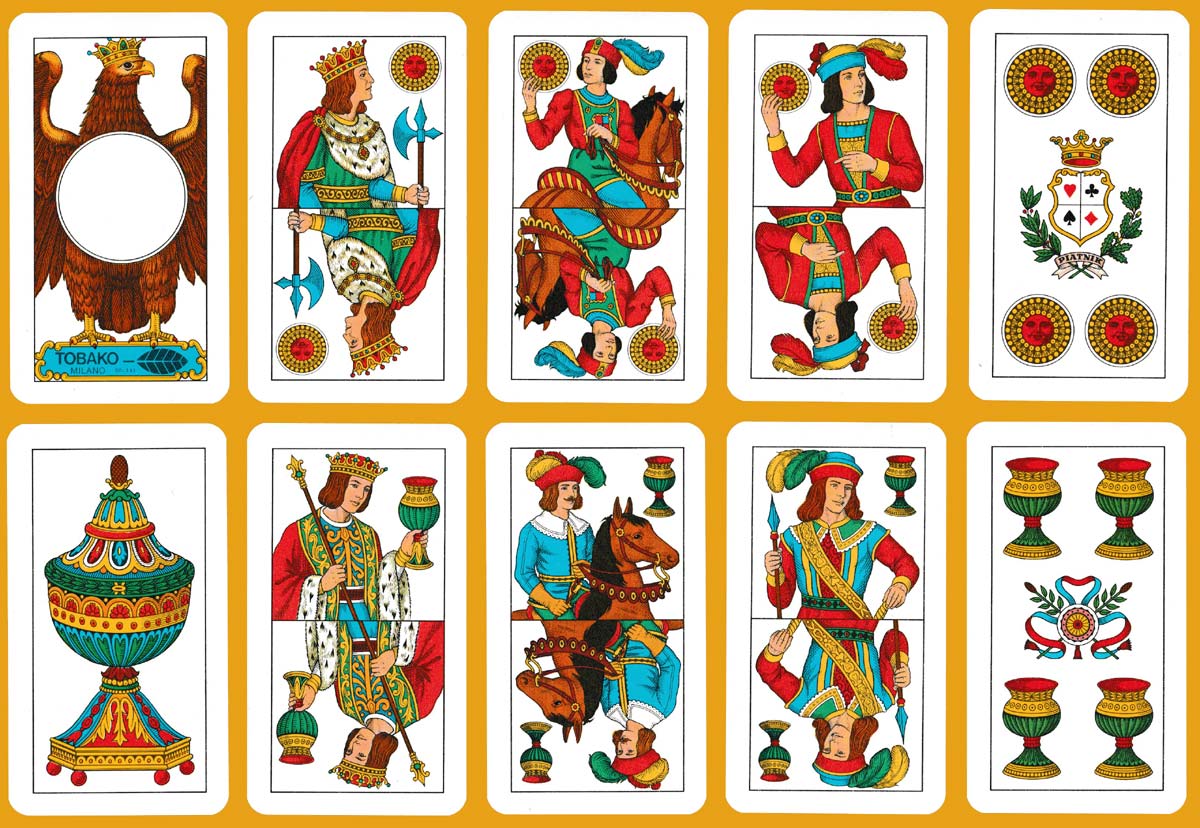
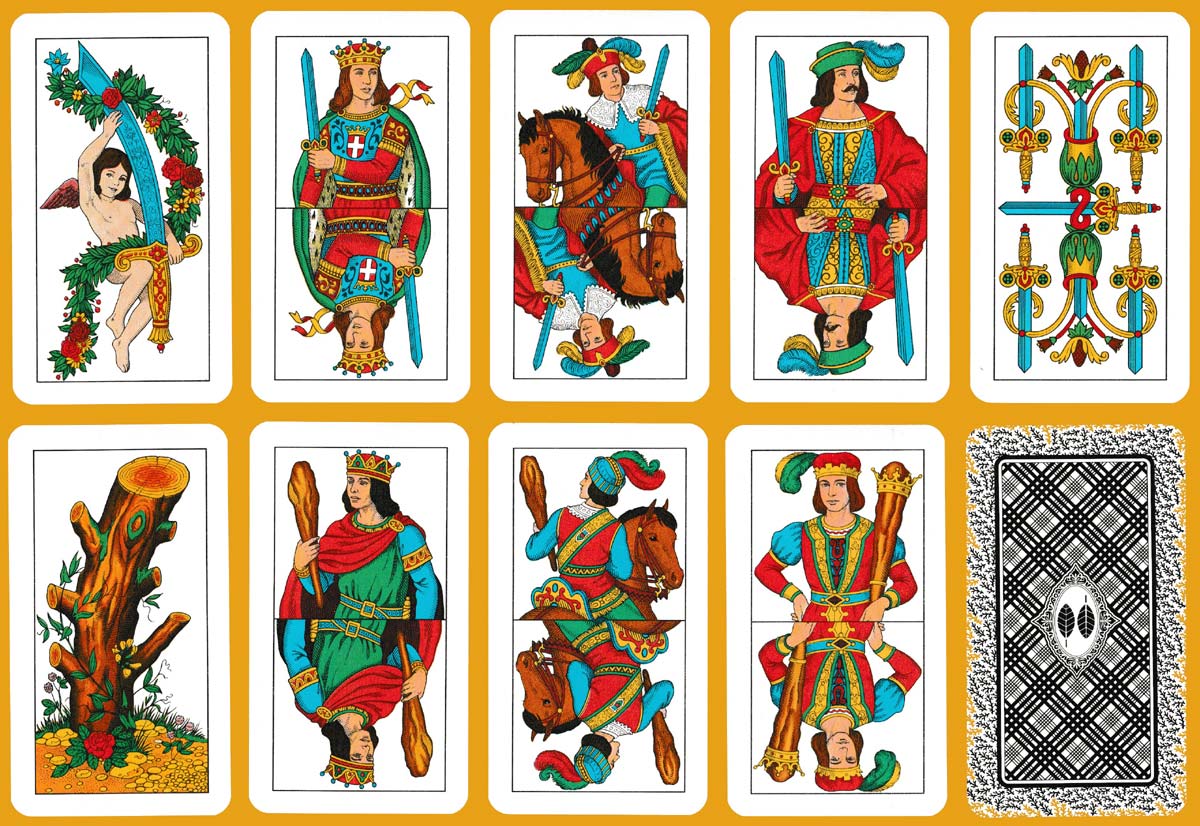
Above: double-ended Piacentine pattern made by Piatnik for Tobako, Milan, c.1980. 40 cards in tuck box. Size: 51 x 91 mm. Images and notes courtesy Roddy Somerville.
NOTE: presumably TOBAKO was a chain of tobacconists in Milan but I can find no information about them.
By Simon Wintle
Spain • Member since February 01, 1996 • Contact
I am the founder of The World of Playing Cards (est. 1996), a website dedicated to the history, artistry and cultural significance of playing cards and tarot. Over the years I have researched various areas of the subject, acquired and traded collections and contributed as a committee member of the IPCS and graphics editor of The Playing-Card journal. Having lived in Chile, England, Wales, and now Spain, these experiences have shaped my work and passion for playing cards. Amongst my achievements is producing a limited-edition replica of a 17th-century English pack using woodblocks and stencils—a labour of love. Today, the World of Playing Cards is a global collaborative project, with my son Adam serving as the technical driving force behind its development. His innovative efforts have helped shape the site into the thriving hub it is today. You are warmly invited to become a contributor and share your enthusiasm.

Related Articles

Gó Succo
Gó Succo fruit juice promotion deck featuring Walt Disney cartoons.
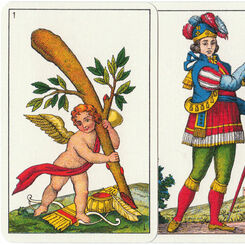
Sarde Pattern
Sarde pattern published by Modiano, c.1975, based on early XIX century Spanish model.
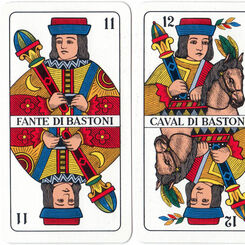
Triestine Pattern
The Triestine pattern is derived from the Venetian (Trevisane) pattern but with its own characterist...

Primiera Bolognese
Primiera Bolognese by Modiano, c.1975

Bergamasche Pattern
Bergamasche Pattern by Modiano, 1970s.

Hermanos Solesio
“Money Bag” pattern by Hermanos Solesi, late 18th c.
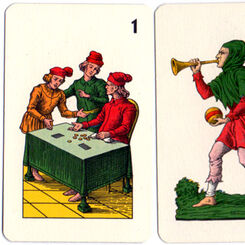
Tarocco Siciliano
The highly individual Sicilian Tarot has the Italo-Portuguese suit system with straight, interlockin...
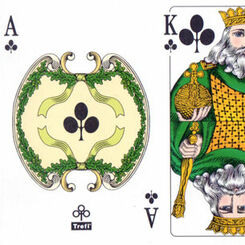
Rhineland Pattern by KZWP
Rhineland pattern by KZWP.

Portuguese pattern
19th century Portuguese pattern, re-printed from original woodblocks.

Bohemian Pattern
The Bohemian Pattern, sometimes called the Prager Pattern, has roots in the 16th century.
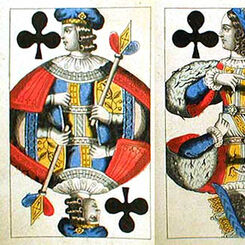
Wiener pattern
The Vienna pattern, or Wiener Bild, is a distant relative of the early Lyons pattern. The King of He...

Piedmont Pattern
The Piedmont pattern is a very close relative to the French 'Paris' pattern. The courts are not name...
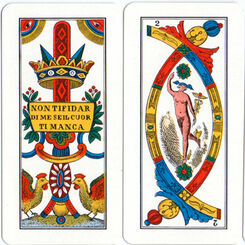
Trevisane pattern
The double-ended version of the ‘Trevisane’ pattern originated in the early 19th century.

Minchiate Fiorentine
The Florentine game of Minchiate is played with a pack of 97 cards. The subjects and arrangements of...
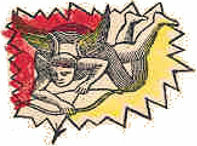
Tarocco Piemontese | Piedmontese tarot
The double ended version of the Piedmontese Tarot evolved during the second half of the nineteenth c...
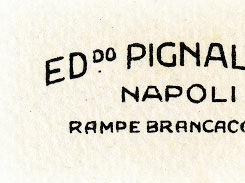
Small Tuscan Pattern
Small Tuscan Pattern
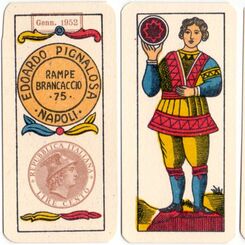
Brescia pattern
The Brescia pattern contains elements which come from a past age.
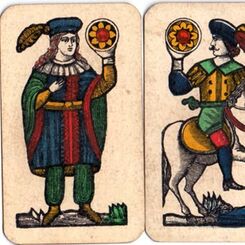
Romagnole pattern by Guglielmo Murari
Romagnole pattern by Guglielmo Murari c.1920
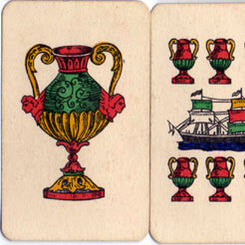
Sicilian Pattern
The Sicilian pack has a similar composition to the Neapolitan pack, and is small and squat in appear...

Neapolitan Pattern
Cartine da Gioco Vesuvio miniature Neapolitan pattern.
Most Popular
Our top articles from the past 60 days






















